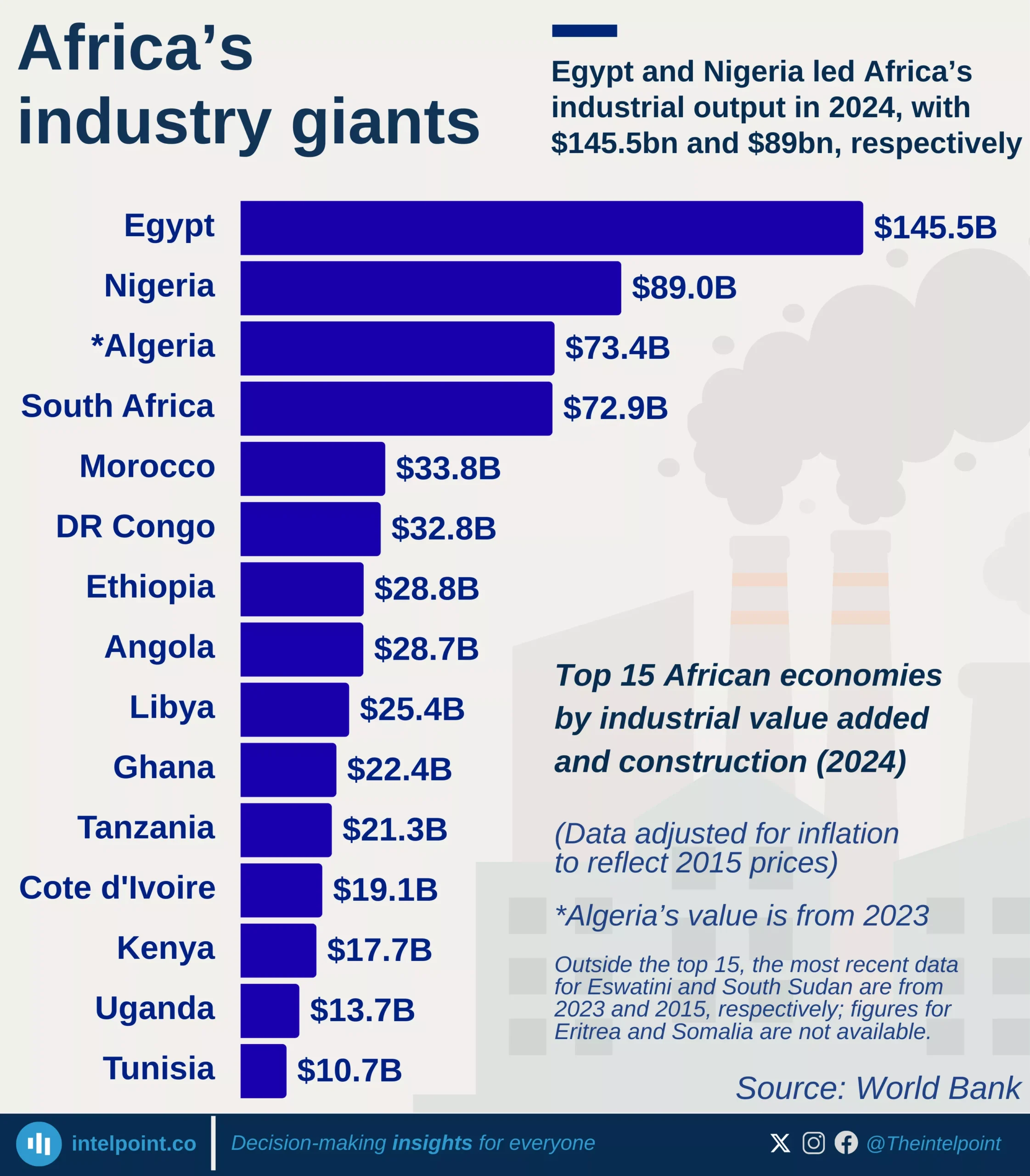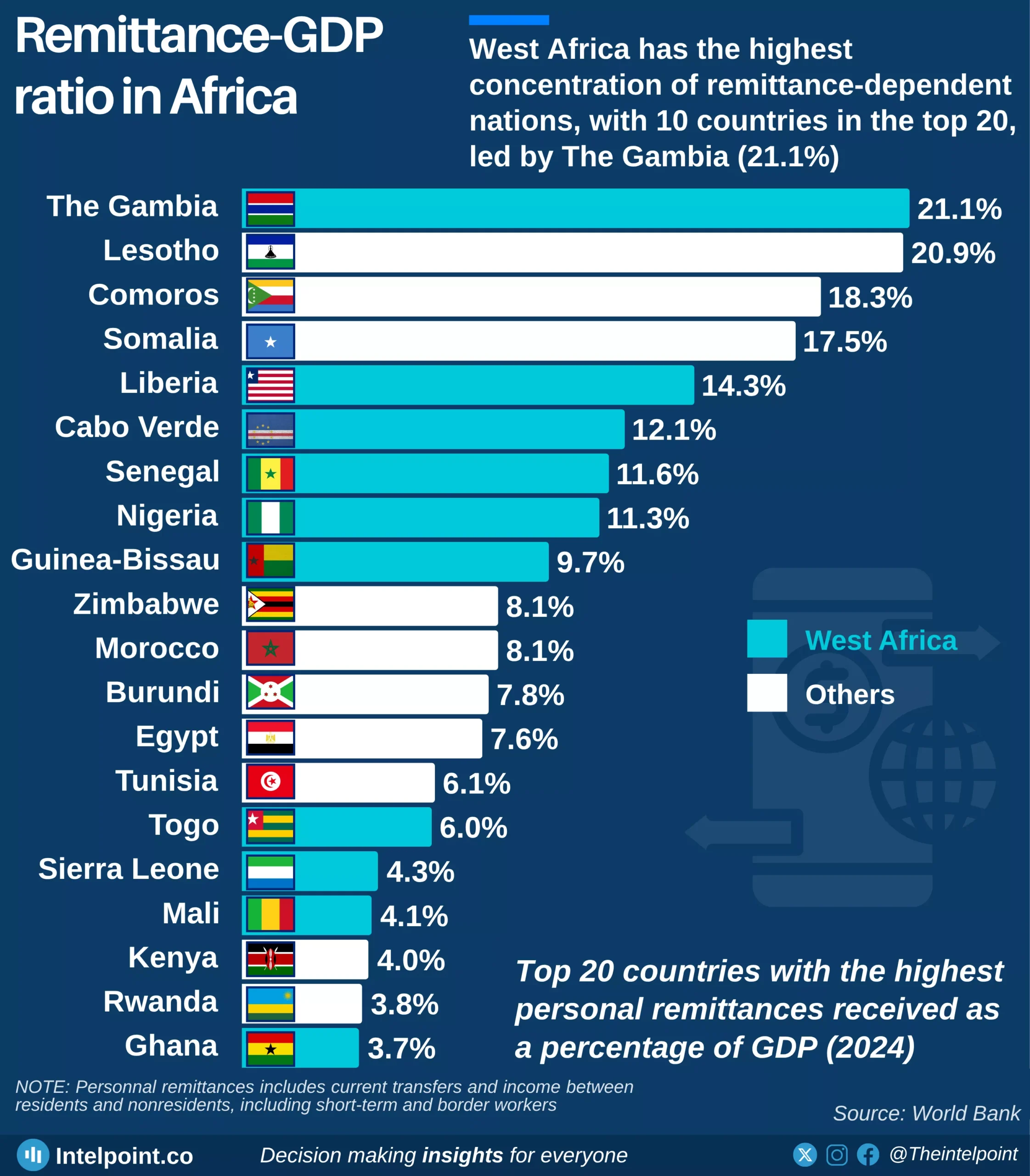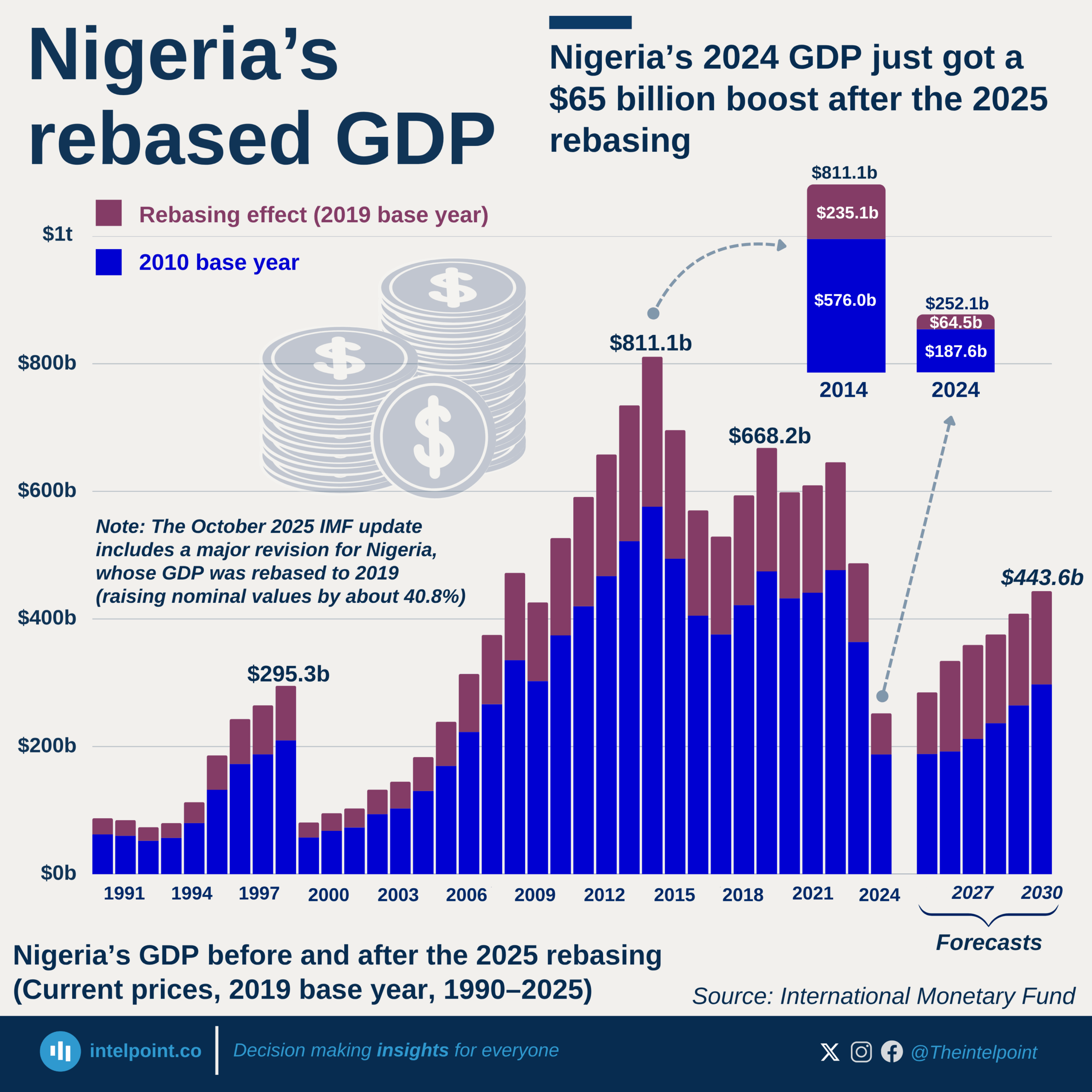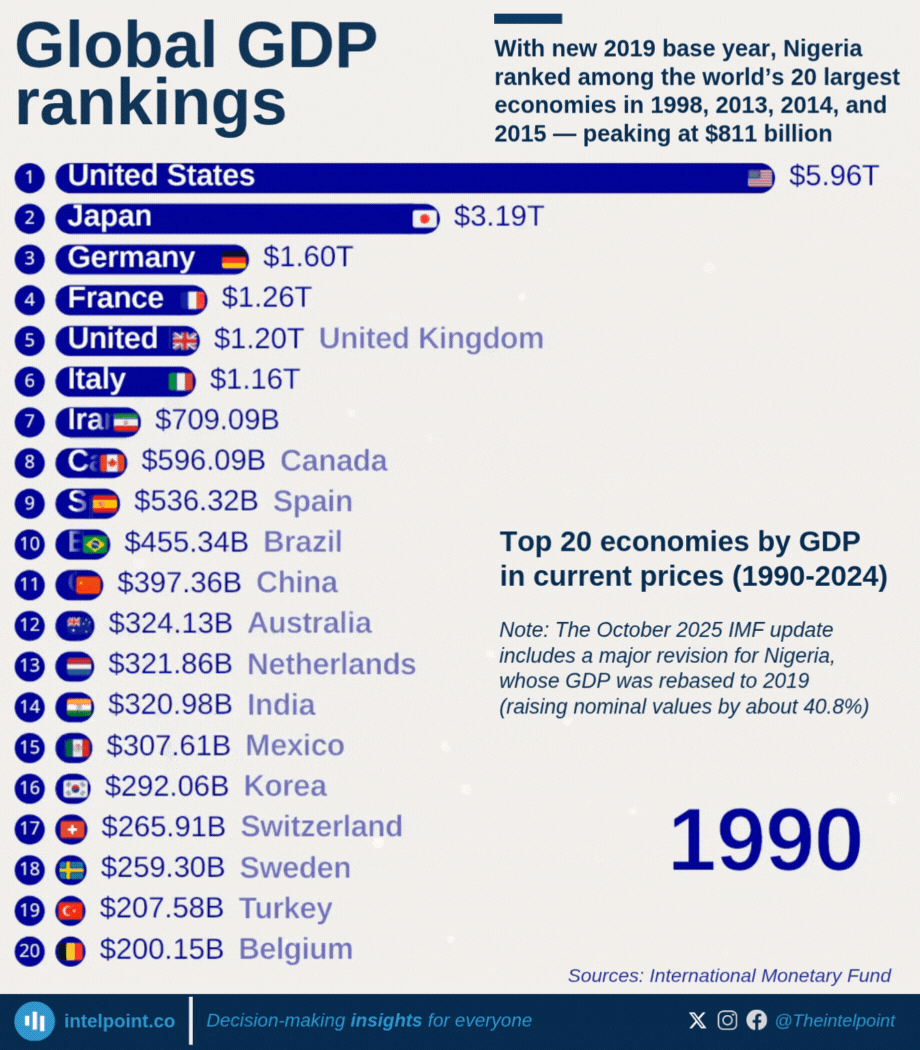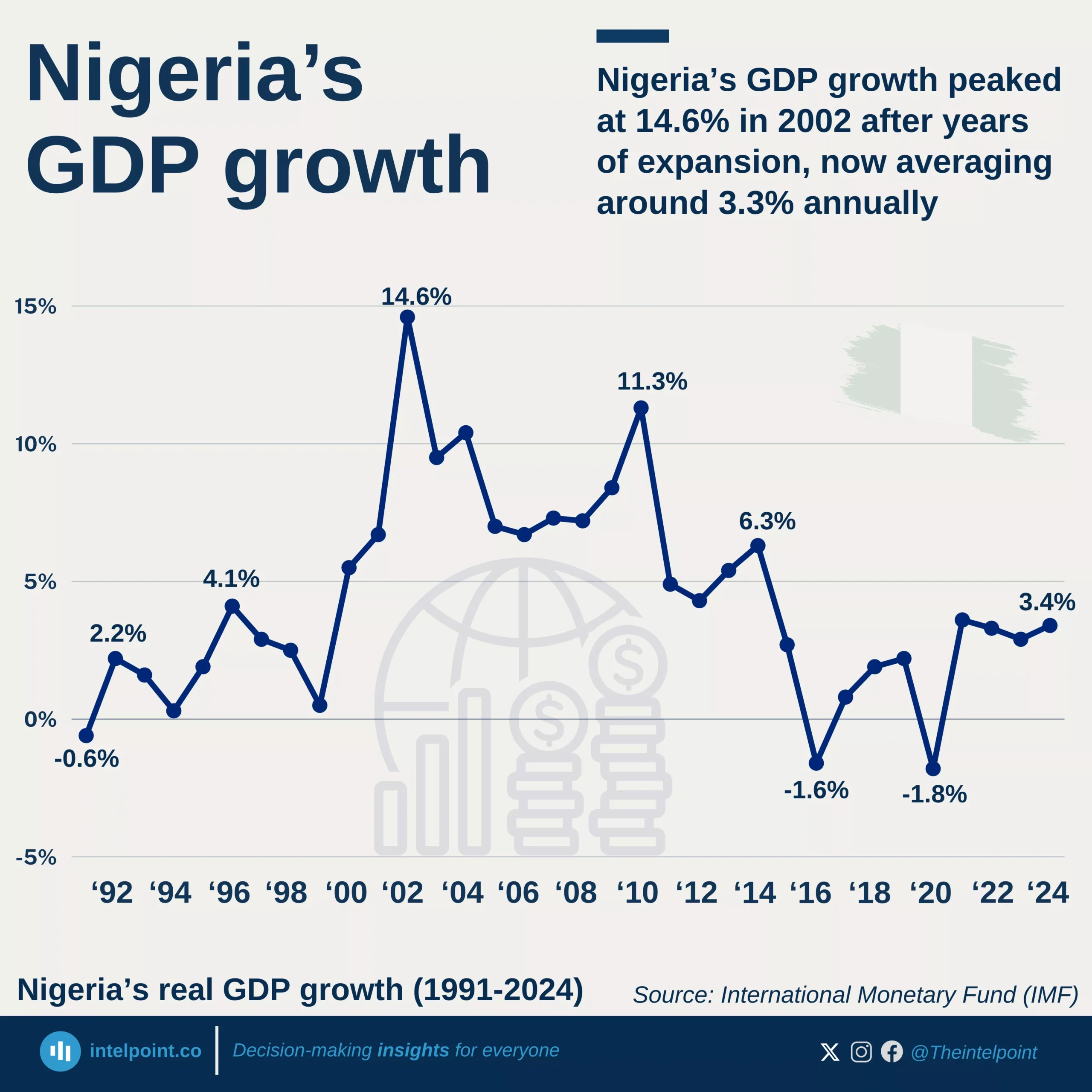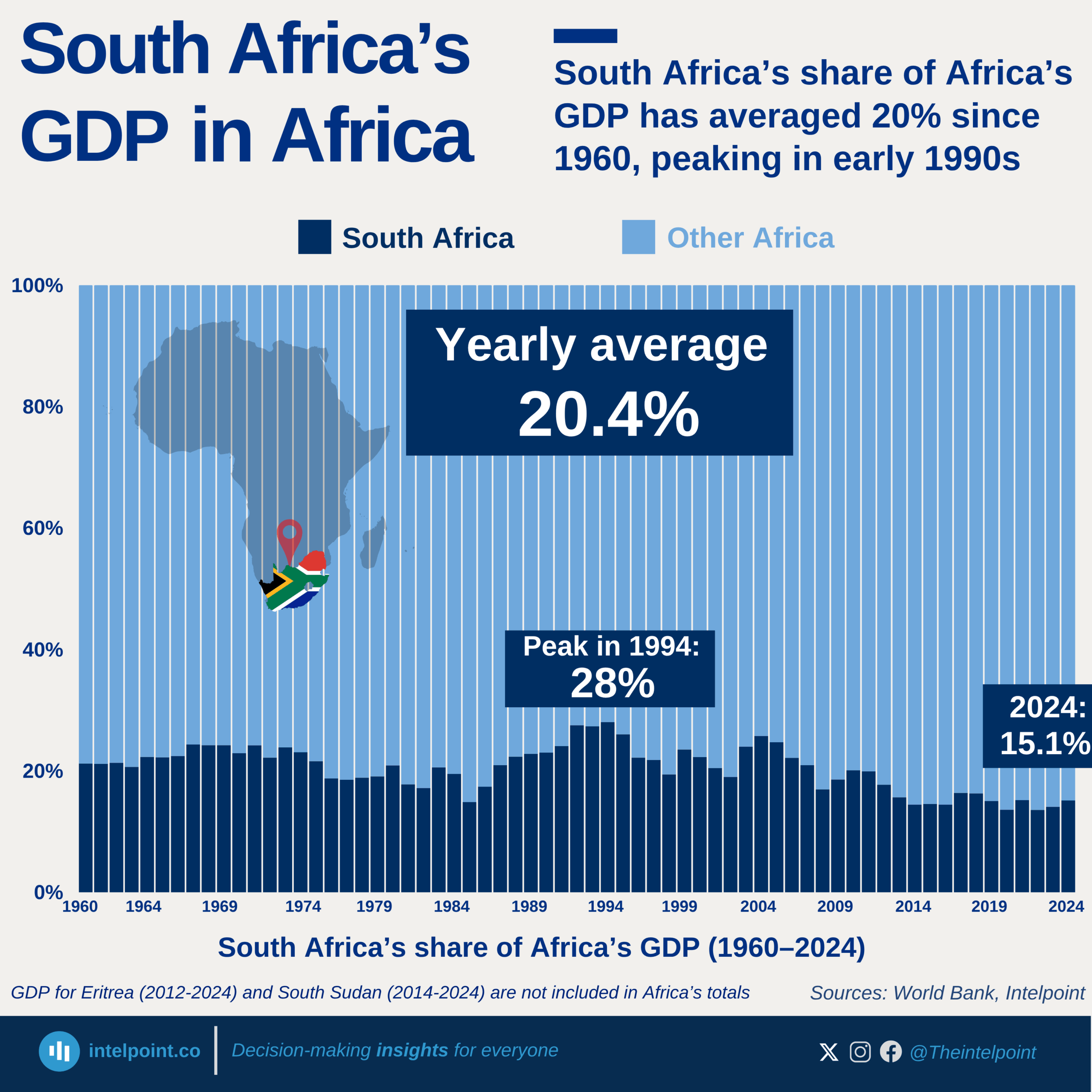South Africa’s GDP per capita has followed a strong, long-term, upward trend, expanding more than fivefold from $440 in 2000 to a record $2,692 in 2024. The 2000s marked a period of steady growth, briefly interrupted by the 2008 global financial crisis, after which the economy regained momentum.
A second setback came in 2020 during the pandemic, but recovery was swift, with per capita income climbing sharply in the early 2020s. By 2024, South Africa not only reached its highest level on record but also reinforced its position as one of Africa’s top three economies by per capita output, reflecting structural resilience and gradual progress despite recurring global and domestic headwinds.
